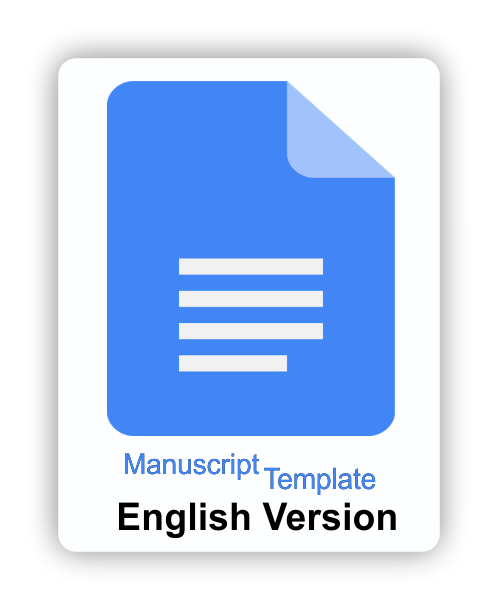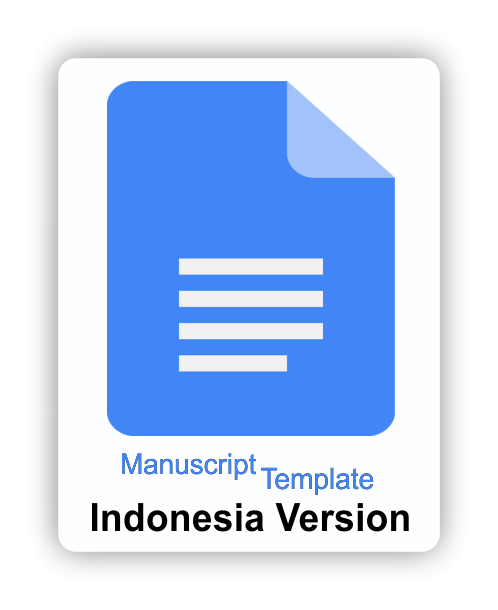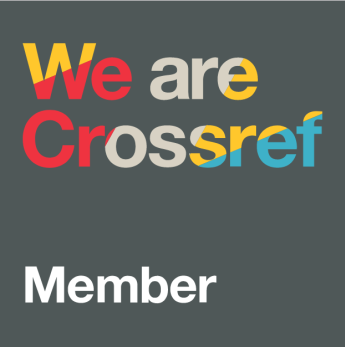Analyzing students’ computational thinking and math reasoning via PISA-based learning
Downloads
omputational thinking and mathematical reasoning abilities are crucial 21st century skills. However, the results of international studies show that these abilities are still low in Indonesian students. This study aims to test the effectiveness of PISA-based learning in improving the computational thinking and mathematical reasoning abilities of junior high school students. The PISA Principles are a learning guide released by the OECD to produce globally competent students. The study used a quasi-experimental design with two groups of grade VII junior high school students as subjects. The experimental group received a contextual-based PISA principle learning method, while the control group followed the conventional learning method. The research instrument was a computational thinking and mathematical reasoning ability test. Data were analyzed using a two-sample t-test. The results showed that the contextual-based PISA principle learning method was effective in improving students' mathematical reasoning abilities but was less effective for computational thinking abilities. These findings can be a reference in designing mathematics learning relevant to the demands of the 21st century. The recommendation from the results of this study is the need for instrument adaptation to measure the dimensions of computational thinking that are more specific to the four main indicators, namely: decomposition, pattern recognition, abstraction and algorithms.
Aydin, U., & Ubuz, B. (2022). Relationships between cognitive structures and proof construction in geometry. International Journal of Science and Mathematics Education, 20(3), 519-539. https://ftp.math.utah.edu/pub/tex/bib/toc/ijsme.html#20(3):March:2022
Azizah, N. I., Roza, Y., & Maimunah. (2022). Computational thinking process of high school students in solving sequences and series problems. Journal Analisa, 8(1), 21-35. https://doi.org/10.15575/ja.v8i1.17917
Barr, V., & Stephenson, C. (2011). Bringing computational thinking to K-12: What is involved and what is the role of the computer science education community? ACM Inroads, 2(1), 48-54. https://doi.org/10.1145/1929887.1929905
Benton, L., Hoyles, C., Kalas, I., & Noss, R. (2016). Building mathematical knowledge with programming: Insights from the ScratchMaths project. Constructionism in Action 2016: Conference Proceedings (pp. 26-33). https://discovery.ucl.ac.uk/id/eprint/1475523/
Brackmann, C. H., Barone, D. A. C., Boucinha, R. M., & Reichert, J. (2019). Development of computational thinking in Brazilian schools with social and economic vulnerability: How to teach computer science without machine. International Journal of Innovation Education and Research, 7(4), 79-96. file:///D:/editor,+PB-1390.pdf
Brodie, K., Coetzee, K., Lauf, L., Modau, S., & O'Brien, R. (2010). Teaching mathematical reasoning in secondary school classroom. Springer Science.
Care, E., Griffin, P., & Wilson, M. (Eds.). (2018). Assessment and teaching of 21st century skills: Research and applications. Springer. https://doi.org/10.1007/978-94-017-9395-7
Csapó, B., & Molnár, G. (2019). Online diagnostic assessment in support of personalized teaching and learning: The eDia system. Frontiers in Psychology, 10, 1-14. https://doi.org/10.3389/fpsyg.2019.01522
Denning, P. J. (2019). Computational thinking in science. American Scientist, 105(1), 13-17. https://doi.org/10.1511/2017.124.13
English, L. D., & Gainsburg, J. (2016). Problem solving in a 21st-century mathematics curriculum. In L. D. English & D.
Kirshner (Eds.), Handbook of international research in mathematics education (3rd ed., pp. 313-335). Taylor & Francis.
Gravemeijer, K., Stephan, M., Julie, C., Lin, F. L., & Ohtani, M. (2017). What mathematics education may prepare students for the society of the future? International Journal of Science and Mathematics Education, 15(1), 105-123. https://doi.org/10.1007/s10763-017-9814-6
Grgurina, N., Barendsen, E., van Veen, K., Suhre, C., & Zwaneveld, B. (2018). Exploring students' computational thinking skills in modeling and simulation projects: A pilot study. In Proceedings of the 13th Workshop in Primary and Secondary Computing Education (pp. 1-4). https://doi.org/10.1145/2818314.2818325
Grover, S., & Pea, R. (2018). Computational thinking: A competency whose time has come. In S. Sentance, E. Barendsen, & C. Schulte (Eds.), Computer science education: Perspectives on teaching and learning in school (pp. 19-37). Bloomsbury Academic.
Herbert, S., Vale, C., Bragg, L. A., Loong, E., & Widjaja, W. (2019). A framework for primary teachers' perceptions of mathematical reasoning. International Journal of Educational Research, 93, 26-37. https://doi.org/10.1016/j.ijer.2015.09.005
Izzah, K. G., & Azizah, M. (2019). Analisis kemampuan penalaran siswa dalam pemecahan masalah matematika siswa kelas IV. Indonesian Journal of Educational Research and Review, 2(2), 210-218. https://doi.org/10.23887/ijerr.v2i2.17629
Jeannotte, D., & Kieran, C. (2017). A conceptual model of mathematical reasoning for school mathematics. Educational Studies in Mathematics, 96(1), 1-16. https://doi.org/10.1007/s10649-017-9761-8
Kalelioglu, F., Gülbahar, Y., & Kukul, V. (2019). A framework for computational thinking based on a systematic research review. Baltic Journal of Modern Computing, 7(2), 183-200. https://www.bjmc.lu.lv/fileadmin/user_upload/lu_portal/projekti/bjmc/Contents/4_3_15_Kalelioglu.pdf
Kamil, M. R., Imami, A. I., & Abadi, A. P. (2021). Analisis kemampuan berpikir komputasional matematis siswa Kelas IX SMP Negeri 1 Cikampek pada materi pola bilangan. AKSIOMA, 12(2), 259-270. https://doi.org/10.26877/aks.v12i2.8447
Kong, S. C. (2019). Components and methods of evaluating computational thinking for fostering creative problem-
solvers in senior primary school education. In S. C. Kong & H. Abelson (Eds.), Computational thinking education (pp. 119-141). Springer. https://doi.org/10.1007/978-981-13-6528-7
Kong, S. C., Lai, M., & Sun, D. (2020). Teacher development in computational thinking: Design and learning outcomes of programming concepts, practices and pedagogy. Computers & Education, 151, 1-19. https://doi.org/10.1016/j.compedu.2020.103872
Lamon, S. J. (2020). Teaching fractions and ratios for understanding: Essential content knowledge and instructional strategies for teachers (4th ed.). Routledge. https://doi.org/10.4324/9781003008057
Lithner, J. (2017). Principles for designing mathematical tasks that enhance imitative and creative reasoning. ZDM Mathematics Education, 49(6), 937-949. https://doi.org/10.1007/s11858-017-0867-3
Lobato, J., Ellis, A. B., Charles, R. I., & Zbiek, R. M. (2021). Developing essential understanding of ratios, proportions, and proportional reasoning for teaching mathematics in grades 6-8. National Council of Teachers of Mathematics.
Lockwood, E., Ellis, A. B., & Knuth, E. (2022). Mathematicians' examples: Promoting student reasoning, generalizing, and conjecturing. Journal for Research in Mathematics Education, 53(1), 2-38. https://pubs.nctm.org/view/journals/jrme/53/1/jrme.53.issue-1.xml
Maharani, S., Nusantara, T., As'ari, A. R., & Qohar, A. (2020). Computational thinking: Pemecahan masalah di abad ke-21. Wade Group Nasional Publishing.
Mansilla, V. B., & Schleicher, A. (2022). Big picture thinking: How to educate the whole person for an interconnected world principles and practices. OECD.
Mata-Pereira, J., & da Ponte, J. P. (2017). Enhancing students' mathematical reasoning in the classroom: Teacher actions facilitating generalization and justification. Educational Studies in Mathematics, 96(2), 169-186. https://doi.org/10.1007/s10649-017-9773-4
Mercier, H., & Sperber, D. (2017). The enigma of reason. Harvard University Press.
Meyer, H. D., & Benavot, A. (Eds.). (2013). PISA, power, and policy: The emergence of global educational governance. Symposium Books Ltd.
Mullis, I. V. S., Martin, M. O., Foy, P., Kelly, D. L., & Fishbein, B. (2020). TIMSS 2019 international results in mathematics and science. Boston College, TIMSS & PIRLS International Study Center.
Nilsen, T. (2016). Teacher quality, instructional quality and student outcomes: Relationships across countries, cohorts and time. Springer Nature Link. https://doi.org/10.1007/978-3-319-41252-8
OECD. (2019). PISA 2018 assessment and analytical framework. OECD Publishing.
Pérez-Marín, D., Hijón-Neira, R., Bacelo, A., & Pizarro, C. (2020). Can computational thinking be improved by using a methodology based on metaphors and scratch to teach computer programming to children? Computers in Human Behavior, 105, 1-25. https://doi.org/10.1016/j.chb.2018.12.027
Reid, D. A., & Knipping, C. (2021). Argumentation in mathematics education. In Encyclopedia of Mathematics Education (pp. 54-59). Springer.
Román-González, M., Pérez-González, J. C., & Jiménez-Fernández, C. (2018). Which cognitive abilities underlie computational thinking? Criterion validity of the Computational Thinking Test. Computers in Human Behavior, 80, 441-459. https://doi.org/10.1016/j.chb.2016.08.047
Sälzer, C., & Roczen, N. (2018). Assessing global competence in PISA 2018: Challenges and approaches to capturing a complex construct. International Journal of Development Education and Global Learning, 10(1), 5-20. https://doi.org/10.18546/IJDEGL.10.1.02
Schleicher, A. (2022). PISA 2022 mathematics framework. OECD Publishing.
Schoenfeld, A. H. (2016). Research in mathematics education. Review of Research in Education, 40(1), 497-528. https://doi.org/10.3102/0091732X16658650
Sentance, S., & Csizmadia, A. (2017). Computing in the curriculum: Challenges and strategies from a teacher's perspective. Education and Information Technologies, 22(2), 469-495. https://doi.org/10.1007/s10639-016-9482-0
Shute, V. J., Sun, C., & Asbell-Clarke, J. (2017). Demystifying computational thinking. Educational Research Review, 22, 142-158. https://doi.org/10.1016/j.edurev.2017.09.003
Stylianides, A. J. (2016). Proving in the elementary mathematics classroom. Oxford University Press. https://doi.org/10.1093/acprof:oso/9780198723066.001.0001
Sumarmo, U. (2018). Mathematical thinking and disposition experiment with vocational high school students using scientific approach. Journal of Education Experts, 1(2), 69-80. https://doi.org/10.30740/jee.v1i2p%p
Supiarmo, M. G., Turmudi, & Susanti, E. (2021). Proses berpikir komputasional siswa dalam menyelesaikan soal PISA konten change and relationship berdasarkan self-regulated learning. Jurnal Numeracy, 8(1), 58-72. https://doi.org/10.46244/numeracy.v8i1.1378
Tan, C., Koh, E., Chan, M., Costes-Onishi, P., & Hung, D. (2021). Advancing 21st century competencies in Singapore. Asia Pacific Journal of Education, 41(2), 203-206. https://asiasociety.org/sites/default/files/2017-10/advancing-21st-century-competencies-in-singapore.pdf
Thompson, P. W., Hatfield, N. J., Yoon, H., Joshua, S., & Byerley, C. (2017). Covariational reasoning among US and South Korean secondary mathematics teachers. The Journal of Mathematical Behavior, 48, 95-111. https://doi.org/10.1016/j.jmathb.2017.08.001
Vebrian, R., Putra, Y. Y., Saraswati, S., & Wijaya, T. T. (2021). Kemampuan penalaran matematis siswa dalam menyelesaikan soal literasi matematika kontekstual. AKSIOMA, 10(4), 2602-2614. https://doi.org/10.24127/ajpm.v10i4.4369
Venkat, H., Askew, M., & Abdulhamid, L. (2021). Teaching for structure and generality: Assessing changes in teachers mediating primary mathematics in South Africa. Educational Studies in Mathematics, 107(1), 71-89. https://www.diva-portal.org/smash/get/diva2:1365423/FULLTEXT01.pdf
Weintrop, D., Beheshti, E., Horn, M., Orton, K., Jona, K., Trouille, L., & Wilensky, U. (2016). Defining computational thinking for mathematics and science classrooms. Journal of Science Education and Technology, 25(1), 127-147. https://doi.org/10.1007/s10956-015-9581-5
Wibowo, A. (2022). Keterampilan penalaran deduktif (Deductive reasoning skills). Yayasan Prima Agus Teknik.
Wing, J. M. (2006). Computational thinking. Communications of the ACM, 49(3), 33-35. https://doi.org/10.1145/1118178.1118215
Yadav, A., Mayfield, C., Zhou, N., Hambrusch, S., & Korb, J. T. (2014). Computational thinking elementary and secondary teacher education. ACM Transactions on Computing Education, 14(1), 1-16. https://doi.org/10.1145/2576872
Zhang, L., & Nouri, J. (2019). A systematic review of learning computational thinking through Scratch in K-9. Computers & Education, 141, 1-25. https://doi.org/10.1016/j.compedu.2019.103607
Zulnaidi, H., Oktavika, E., & Hidayat, R. (2020). Effect of use of GeoGebra on achievement of high school mathematics students. Education and Information Technologies, 25(1), 51-72. https://doi.org/10.1007/s10639-019-09899-y
Copyright (c) 2025 Mutiara Annisa Widodo, Marsigit Marsigit, Galih Pranowo

This work is licensed under a Creative Commons Attribution-ShareAlike 4.0 International License.
The journal allows the author(s) to hold the copyright without restrictions. Finally, the journal allows the author(s) to retain publishing rights without restrictions
 | Jurnal Inovasi Teknologi Pendidikan by http://journal.uny.ac.id/index.php/jitp is licensed under a Creative Commons Attribution-ShareAlike 4.0 International License. |























